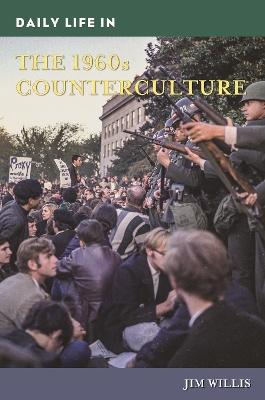Daily Life
2 total works
This compelling book describes how everyday people courageously survived under repressive Communist regimes until the voices and actions of rebellious individuals resulted in the fall of the Iron Curtain in Europe.
Part of Greenwood's Daily Life through History series, Daily Life behind the Iron Curtain enables today's generations...
Read moreThis compelling book describes how everyday people courageously survived under repressive Communist regimes until the voices and actions of rebellious individuals resulted in the fall of the Iron Curtain in Europe.
Part of Greenwood's Daily Life through History series, Daily Life behind the Iron Curtain enables today's generations to understand what it was like for those living in Eastern Europe during the Cold War, particularly the period from 1961 to 1989, the era during which these people-East Germans in particular-lived in the imposing shadow of the Berlin Wall.
An introductory chapter discusses the Russian Revolution, the end of World War II, and the establishment of the Socialist state, clarifying the reasons for the construction of the Berlin Wall. Many historical anecdotes bring these past experiences to life, covering all aspects of life behind the Iron Curtain, including separation of families and the effects on family life, diet, rationing, media, clothing and trends, strict travel restrictions, defection attempts, and the evolving political climate. The final chapter describes Eastern Europe after the fall of the Berlin wall and the slow assimilation of East into West, and examines Europe after Communism.
This book looks at daily life during a pivotal decade in American history: the 1960s. It covers the Vietnam War and the civil rights movement as well as counterculture and protest movements.
The 1960s saw the assassination of a popular president; a confusing and unpopular war that claimed the...
Read moreThis book looks at daily life during a pivotal decade in American history: the 1960s. It covers the Vietnam War and the civil rights movement as well as counterculture and protest movements.
The 1960s saw the assassination of a popular president; a confusing and unpopular war that claimed the lives of thousands of American combatants; the passage of a national civil rights act that mandated equal rights across all races; countless violent exchanges among Americans with polarized views on the Vietnam War and civil rights; and through it all, the rise of a counterculture movement that challenged long-established American social and cultural traditions.
Daily Life in the 1960s Counterculture looks at the 1960s from the perspective of Americans who, despite their best efforts to live normal lives, could not escape the tension, conflict, and controversy that surrounded them. The war and the violence associated with protests of it came at great personal cost to many American families. This book looks those social and cultural changes, examining such topics as the sexual revolution; recreational drug culture; the roles of film, television, and music; and more.
- Explains how political issues became personal threats to millions of Americans in the 1960s
- Recounts the birth of the 1960s civil rights movement in America
- Shows the roles that 1960s film, television, and music played in the lives of Americans
- Provides an understanding of the sexual revolution that began in the 1960s
- Offers readers with a firsthand look at the ideas that spurred people to action in the 1960s through primary source selections

